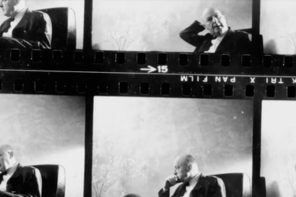Gilman, Minnesota was a Catholic town.
That’s how Randy Niedzielski described his boyhood home to his wife, Nancy. There was Mass each weekend, and church events every summer.
“They lived and breathed it,” Nancy Niedzielski said.
When Randy Niedzielski was diagnosed with brain cancer in 2000, he and his wife joined a support group in the Seattle area, where they lived. They watched others deteriorate.
“We knew it would be a slow, painful death,” Nancy Niedzielski said.
In 1997, Oregon voters approved the Death with Dignity Act, which allows terminally ill people to ask their doctors for a prescription for lethal drugs. When his pain intensified, Randy Niedzielski said he wanted to move to Oregon, where he could end his own life, he told his wife, in a controlled, calm manner. Doctors told him it was unlikely he would be able to establish residency in that state before cancer killed him.
“He was angry,” Nancy Niedzielski said. “Before he died in 2006, he asked me to make sure the same law passed in Washington.”
By Living Longer, You Suffer Longer
In 2008, Randy Niedzielski’s wish came true. Washington State voters approved the Death with Dignity law, and it became effective early in March.
For him, Nancy Niedzielski said, it was two years too late.
She blames religious leaders for her husband’s painful death. Theological traditionalists are stuck in a time warp that hinders widespread acceptance of physician-assisted death, she said.
“We’ve made such advances in medicine that we need this now,” Nancy Niedzielski said. “By living longer, you suffer longer, too. My husband is the perfect example. Twenty years ago, he would have died within weeks. But medicine kept him alive a long time, and so death becomes much longer and more horrible.”
“Death with Dignity brings a balance back to medicine,” she said.
The fight over whether terminally ill people can take their own lives has attracted religious heavyweights. The Roman Catholic Church leads the fight against the practice, and many major denominations are following.
Even now, months after physician-assisted death became legal in Washington State, patients have trouble finding doctors who will write them a prescription for lethal drugs. A central Washington man diagnosed with pancreatic cancer asked his doctors for the drugs, but not one would approve his request. Stephen Wallace died on April 8, after what his family said was a painful struggle that could have been avoided had doctors respected his wishes.
“Patients need professional medical support for their choice, not abandonment at their moment of need,” Dr. Tom Preston, a lead Death with Dignity advocate, said shortly after Wallace’s death.
Opponents of the law say no doctor should have to do something that violates his or her religious or moral ethics.
“It’s contrary to the fifth commandment of ‘Thou shall not kill,’” said Dierdre McQuade, spokeswoman for the US Conference of Catholic Bishops. “The Catholic Church teaching is very clear on this.”
Only the United Church of Christ and the Unitarian Universalist Association of Congregations have offered support of aid in dying, although numerous individual congregations of all stripes have also stood up for such measures.
The debate has largely focused on spirituality and ethics, but experts say new medical technology that has opened the door to the practice leaves religious organizations in a bind.
Catholic leaders have long been supportive of pain-management measures, up to and including high doses of morphine that slow a patient’s respiration to the point of death, said Courtney Campbell, a professor of religion and culture at Oregon State University, and an expert on faith and end-of-life issues.
The Catholic position on physician-assisted death contradicts its support of such pain management, known as palliative sedation, he said.
“If the religious tradition had towed the line firmly and said that death can’t be hastened under any circumstances, it wouldn’t have allowed palliative sedation death to occur,” he said.
That may be a sign that even the strictest of religious traditions have a tendency to shift with time, and as our culture changes. Like Niedzielski’s friends, people who claim intense faith and adherence to a certain doctrine may likely reconsider those beliefs as technology advances and its use becomes accepted in everyday life, Campbell said. Even if official church policies don’t change, churchgoers often do.
The Catholic Church’s opposition to contraception hasn’t changed, but Catholics in the United States use birth control and have abortions at about the same rate as non-religious people, Campbell said. And he explained that in the dozen years physician-assisted death has been legal in Oregon, about half of the nearly 400 people who have self-administered a lethal dose have been religious, even conservative.
“There are fairly strong doctrinal statements from Roman Catholics and Southern Baptists and a good number of other traditions, but individuals may not feel those are binding, or they may feel their circumstances are exceptional,” he said.
The Catholic Church hasn’t shifted its policies regarding end-of-life care, said Dierdre McQuade, and she explained that the difference between palliative sedation and physician-assisted death is intent. Even in the case of increasing morphine doses, the intent is to manage pain; the intent of physician-assisted death is to extinguish a life, she said.
God prohibits the taking of one’s life under any circumstances, McQuade said; “It’s evil.”
Suffering, even when death is imminent and the pain is excruciating, is a critical piece of life, McQuade said. If someone tries to bypass suffering by taking a lethal drug, that person is losing out on the chance to experience the redemption that suffering brings, she said.
The Catholic Church’s defense of pain management and simultaneous opposition to assisted death shows the disconnect church leaders have with parishioners, said Barbara Coombs Lee, president of Compassion & Choices, a Denver-based organization that advocates for physician-assisted death.
“For most patients, and for people who are not theological doctrinal experts, that is a distinction without a difference,” she said.
In practice, the choice of whether to take one’s own life in the case of a terminal illness or wait for death to come, whether naturally or through some method of pain management, will be a personal choice for most people, with little consideration of denominational doctrine, Campbell said.
Oregon and Washington are “fertile ground” for laws allowing physician-assisted death because fewer people there are associated with mainline denominations than in other places, Campbell said. Also, the laws in both states were approved through referendums proposed directly by voters. It’s not likely such laws will pass anytime soon in states where voter-driven referendums aren’t possible because many politicians would likely hesitate before publicly supporting such a controversial proposal, he said.
Coombs Lee believes the practice will spread as people across the country grow more comfortable with the idea.
“We will see congregations of all faiths that are supportive of parishioners who want this choice,” she said.




